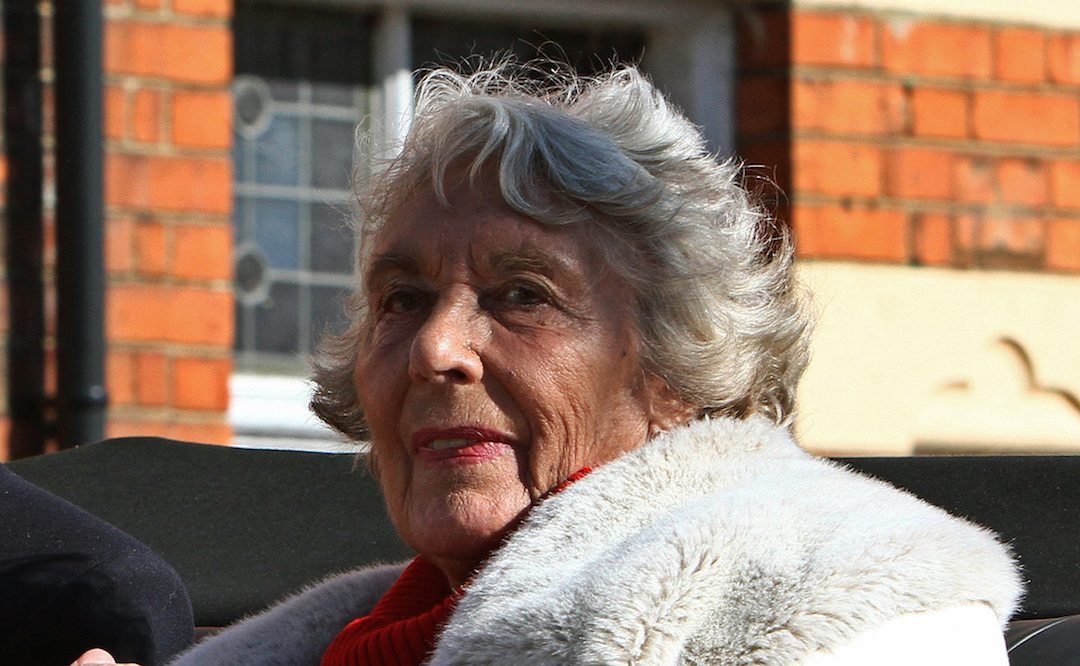“I suppose I’m pretty special being the only woman to be wife and mother of two Formula One World Champions,” was the reply that came from Bette Hill (above, Pete Austin photo) when I asked her about her memorable moment in motor racing. Bette was part of the fabric of Grand Prix motor racing throughout what many believe to be a golden era of the sport — even if those years were peppered frequently with tragic accidents where many talented and star drivers were lost.
While motor racing was the arena Bette and Graham were ultimately immersed in, it was a chance meeting at the Auriol Rowing Club function on Boxing Day 1950 where they met. Graham was in the Navy at that point, serving his period of National Service. Five years later the couple were married and their lifestyle had changed with Graham now working for Lotus — the motor racing bug had already bitten in 1952.
Bette, for her part, worked as a secretary to the manager of Automotive Products, Great Portland Street, London, the wages of a professional racing driver were not then as glamorous as they are today, so the family funds were boosted by Bette’s employment. As Graham’s driving career came to the fore, eventually becoming a Grand Prix driver in 1957, the destinations of events became more exotic. Still cash strapped, overseas trips to motor races took the mantle as “holidays” in those times.
With the loss of so many drivers from the late 1950s though to the early 1970s, to quell her thoughts of the inherent dangers of motor racing she took up the job as timekeeper, learning the skill from Hazel Chapman and later tutoring many other girls, including Helen Stewart. In a 2002 interview, Bette gave an insight into the proficiency and pressures of the job, “One had to concentrate like mad. It’s exhausting work, especially during four hours of practice, followed by the races themselves lasting two hours or more, but one becomes totally absorbed. When timekeeping and lap-scoring you mustn’t miss a car or a fraction of a second. If you’re busting to go to the loo, too bad, you learn to stick it out — often in the rain and freezing cold. It was vital to remain disciplined and not fall apart if one’s husband didn’t come around. You split yourself down the middle, part machine and part human being — worrying in the back of your mind, but automatically carrying on timekeeping. I’ve seen one or two girls become hysterical in the pits just watching their husbands or boyfriends racing, but if they did panic there would always be a wife or mechanic who’d tell them to pull themselves together or get out! Otherwise it could be upsetting for everyone else — but in all the years Graham was racing it happened only rarely.” It wasn’t just one car she timed as she further recalled, “I think my record was 17.”
Bette Hill was a larger than life individual in the Paddock, organizing many social events and later becoming one of the founders of the Doghouse Owners’ Club — a social club for the wives and girlfriends of drivers, mechanics and others involved in motor racing, but also a fundraising organization — “to help wives and girlfriends repair their shattered lives, in the event of a tragedy, through financial and moral support: to help anyone connected to motor racing, whose circumstances had altered through accident or illness.”
The Club, supported by all the drivers, even opened a crèche at events where wives and girlfriends could leave their children while on timekeeping duties — facilities at race circuits were pretty dire at that time with little, or no, hospitality. The Club still survives today and frequently holds fundraising events for projects within the sport, such as the Air Ambulance and other charities providing support to injured drivers.
Despite Graham Hill winning the Indy 500, Bette admitted it was possibly the only race she wished he’d not competed in — although she didn’t mention her feelings to him. With a 16-car pileup on the first lap her nerves were torn to shreds for the rest of the race. When the checkered flag fell with Graham as victor she was utterly exhausted. Graham’s tally of two F1 World Championships and a Le Mans victory still makes him the only driver to achieve that feat. However, despite this success, tragedy struck on November 29, 1975, when Graham and members of the Embassy Hill F1 team were killed following a plane crash on their return from testing at the Paul Ricard Circuit in France. The financial implications of this most painful episode, which have been well documented, were tremendous strain on the family. Life for the family, particularly Bette, would not be the same. Just ten years from that fateful day, son Damon embarks on his motor racing journey, becoming F1 World Champion in 1996. Bette described Damon as having that same tough spirit as his father, and supported him throughout his motor racing career.
In later life Bette Hill was still a keen supporter of those teams Graham drove for, including BRM when she attended both “street demos” in Bourne. In 1980, she was elected as an Honorary Member of the British Racing Drivers Club, which went some way to acknowledge her for her considerable contribution to the sport. At this time of loss, Vintage Racecar offers its sincere condolences to Brigitte, Damon and Samantha and their families and friends.











I remember her well from their visits to the USGP at Watkins Glen. A great woman.
Bette was also recognised many years ago for her contribution to women in our sport as a Vice President of the British Women Racing Driver’s Club a position she held until her recent death.